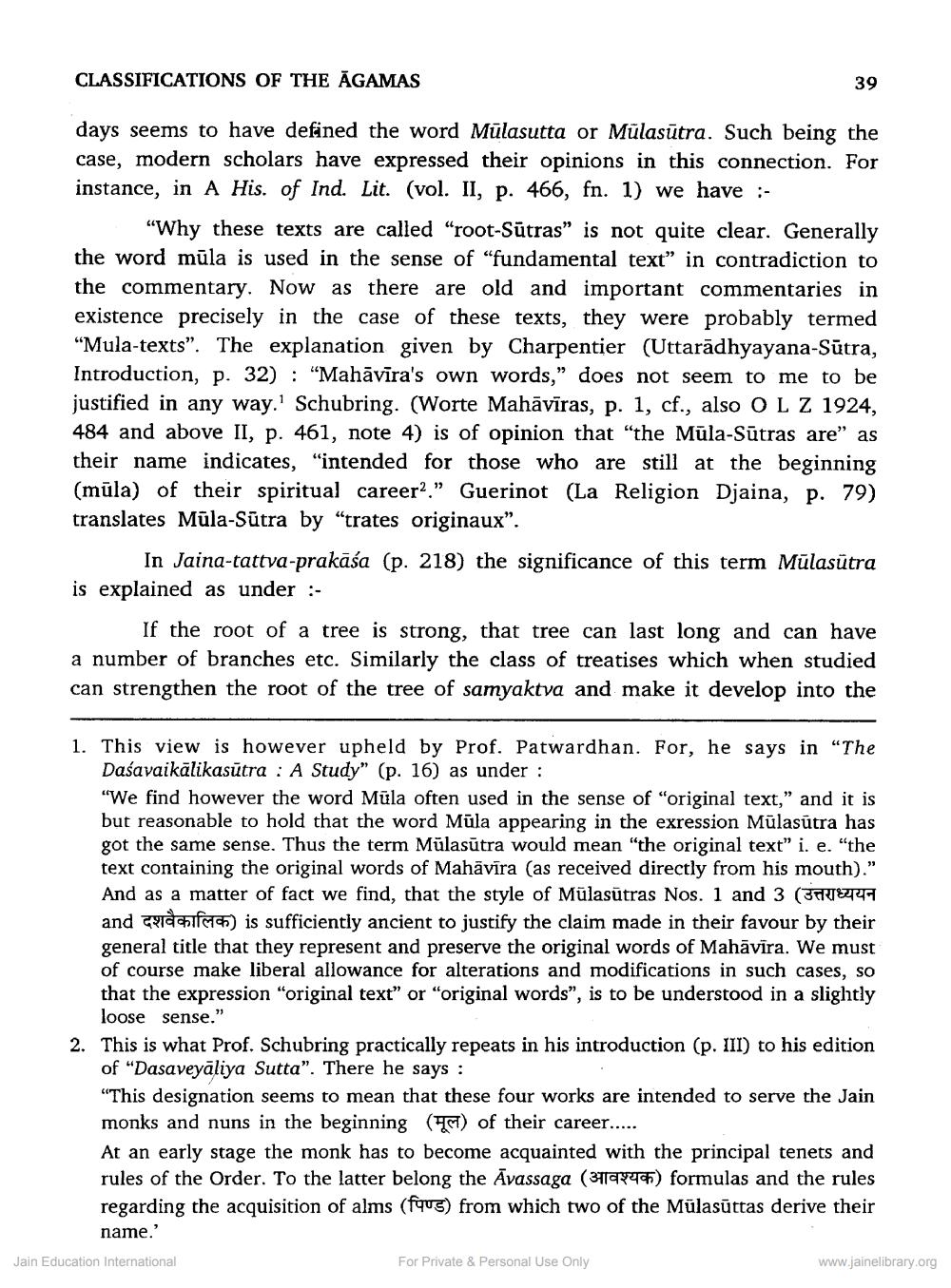________________
CLASSIFICATIONS OF THE ÄGAMAS
39
days seems to have defined the word Mülasutta or Mülasūtra. Such being the case, modern scholars have expressed their opinions in this connection. For instance, in A His. of Ind. Lit. (vol. II, p. 466, fn. 1) we have :
"Why these texts are called "root-Sūtras” is not quite clear. Generally the word mūla is used in the sense of "fundamental text" in contradiction to the commentary. Now as there are old and important commentaries in existence precisely in the case of these texts, they were probably termed "Mula-texts". The explanation given by Charpentier (Uttarādhyayana-Sūtra, Introduction, p. 32) : "Mahāvīra's own words," does not seem to me to be justified in any way.' Schubring. (Worte Mahāvīras, p. 1, cf., also O LZ 1924, 484 and above II, p. 461, note 4) is of opinion that "the Mūla-Sūtras are” as their name indicates, "intended for those who are still at the beginning (mūla) of their spiritual career." Guerinot (La Religion Djaina, p. 79) translates Mūla-Sutra by "trates originaux".
In Jaina-tattva-prakāśa (p. 218) the significance of this term Mūlasutra is explained as under :
If the root of a tree is strong, that tree can last long and can have a number of branches etc. Similarly the class of treatises which when studied can strengthen the root of the tree of samyaktva and make it develop into the
1. This view is however upheld by Prof. Patwardhan. For, he says in "The
Daśavaikālikasūtra : A Study" (p. 16) as under : "We find however the word Müla often used in the sense of "original text," and it is but reasonable to hold that the word Müla appearing in the exression Mülasutra has got the same sense. Thus the term Mülasūtra would mean "the original text" i. e. "the text containing the original words of Mahāvīra (as received directly from his mouth).” And as a matter of fact we find, that the style of Mülasūtras Nos. 1 and 3 (
3 7457 and card cafech) is sufficiently ancient to justify the claim made in their favour by their general title that they represent and preserve the original words of Mahāvīra. We must of course make liberal allowance for alterations and modifications in such cases, so that the expression "original text" or "original words”, is to be understood in a slightly
loose sense." 2. This is what Prof. Schubring practically repeats in his introduction (p. III) to his edition
of "Dasaveyāliya Sutta". There he says: "This designation seems to mean that these four works are intended to serve the Jain monks and nuns in the beginning (70) of their career..... At an early stage the monk has to become acquainted with the principal tenets and rules of the Order. To the latter belong the Avassaga (3719840) formulas and the rules regarding the acquisition of alms (fqug) from which two of the Mülasūttas derive their name.'
Jain Education International
For Private & Personal Use Only
www.jainelibrary.org




